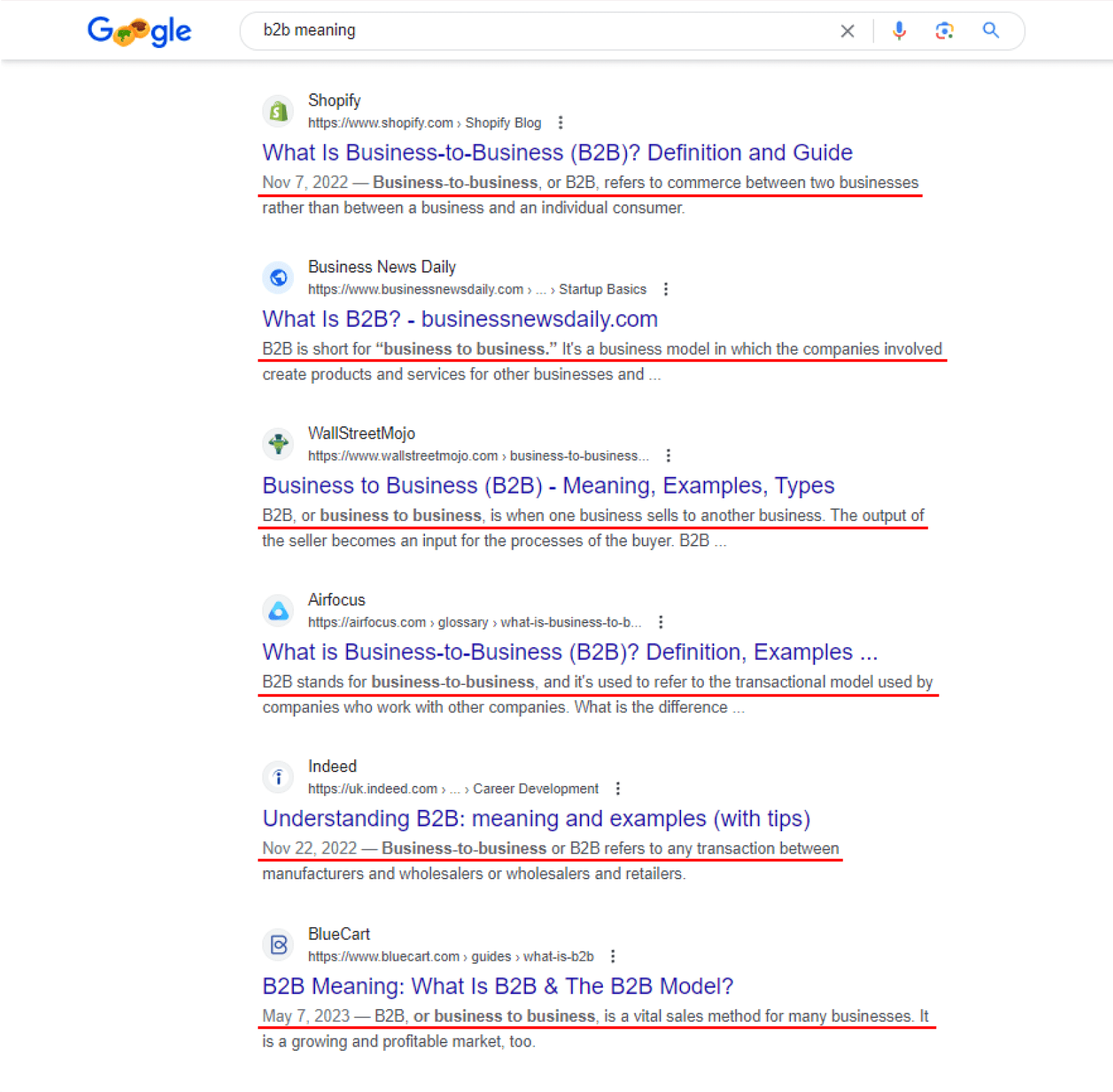Having a strong brand voice is vital for digital marketing and SEO strategies. It establishes a well-defined and consistent voice that resonates with its target audience, brings trust, sparks interest, and encourages active participation, leading to higher customer engagement and brand advocacy.
Creating a distinctive brand voice is no easy feat though. In a saturated market, establishing and differentiating your brand personality rarely happens by chance; it requires substantial effort. Furthermore, having a voice is not enough. It has to be heard by your customers, and that’s where SEO comes into play.
Keep on reading to unlock the potential of SEO to get your voice heard. We are also going to explore a few actionable steps and techniques as well that will enhance your visibility and drive organic traffic to your website.
Readers Also Enjoy: How to Create a Brand Voice And Develop It? – DevriX
1. Find Your Brand Voice
To define your killer brand voice, first you have to figure out whether or not your identity matches your customers’ needs. Take into account various factors, including demographics.
For a youthful audience, for instance, you could be chatty, friendly, and sparkle in some emojis. If you’re targeting B2B, keep it professional and formal.
Remember also that your brand voice and tone aren’t the same. The voice showcases your brand’s personality, while the tone showcases the emotional expression and style.
Key things to keep in mind when creating your brand voice:
- Your Brand Persona. Imagine your brand as a person – how does it look, behave, and/or sound? Giving your brand a distinct personality, allows you to connect with your target audience and differentiate yourself from competitors.
- The Tone of Voice. Is the tone formal, informal, professional, humble, confident, or other?. How do you want your customers to feel when hearing your voice? The brand’s tone determines the emotional expression and style within your brand voice, enabling you to adapt and connect with your audience in different situations.
- Language. What kind of words does your brand persona use to communicate? Is it full of buzzwords, jargon, or always polished and professional? Language is what is defining your brand voice, influencing how your audience perceives and connects with your brand.
- Purpose. What’s your brand’s purpose, what drives you forward? A brand’s purpose is the foundation for your brand’s voice, guiding its personality, messaging, and communication so it can better align with your mission.
Readers Also Enjoy: Voice Search SEO: A Beginner’s Guide – DevriX
2. Optimize Your Brand Voice for SERP
After you’ve nailed your brand voice, you need to ensure it’s heard loud and clear. Considering that most people don’t bother scrolling past the first page of search results, it’s important to optimize your content using trendy keywords without compromising your brand personality.
Do Keyword Research
Think about what sets your brand apart – its name, what it offers, and its purpose. These primary keywords define your business and can take your keyword research to the next level. Especially if you are using tools like Semrush, Moz Pro or SE Ranking.
Use the Power of Title Tags
The title tags are HTML elements that give a glimpse of what users will find if they click on a link. When your site pops up in an online search, the title tag is the first thing they see.

Note that title tags and H1 tags are not the same! The H1 tag does not appear when you do a search and is what your users see on your webpage (it is like a title of the page).. The H1 tag also focuses on on-page visibility and user experience, while the title tag is essential for optimizing search engine visibility and attracting organic traffic.
For an effective title tag, you need to:
- Include the primary keyword/s.
- Place the keyword at the beginning near the start of the tag.
- Ensure the title tag remains within 60 characters.
Each title tag has to be unique to avoid confusion. If you want to optimize the tag further you could use numbers in your title tags, like “10 ways to level up your social media game.”
People also love up-to-date content, so consider adding the date, month, or year to your title tags. And don’t forget the power of fresh and captivating words to hook your readers and demonstrate the value you bring.
Readers Also Enjoy: What Are Brand Guidelines and Do You Need Them [+ Complete Template] – DevriX
Pro tip: For a more accurate title tag, consider basing the length on pixels (less than 600 pixels) rather than characters (less than 60 characters). Keep in mind that different letters take up different amounts of space, resulting in varying pixel widths.
And lastly, conducting A/B testing and measuring the traffic generated from new keywords will help you determine what you’re doing right or wrong.
Learn How to Write Meta Descriptions
A meta description tag or SEO description is a HTML tag that serves as a snippet that is displayed below the title tag in search results. It has a little more space (around 150 to 160 characters) that you can play around with.
Though Google doesn’t use the meta description tag to rank your page, your description can indirectly increase the click-through rate of the SERP snippet.

Here are a few more tips on how to write meta descriptions:
- Make each meta description unique. Don’t skip this step. By leaving it blank, you are giving up control over your content. Google will grab a snippet from your page instead, which may, unfortunately, not accurately represent it.
- Keep content concise and impactful. Meta descriptions serve as advertisements for your content. Use this opportunity to include attention-grabbing content and call-to-actions (CTAs) in short, impactful sentences.
- Create templates to maintain consistency. With so much going on, it’s easy to become sidetracked with style and tone, causing confusion around your brand voice. Establishing templates helps maintain consistency and saves you time and effort.
- Add relevant contact information. If applicable, consider including contact details, operating hours, or any other information that users may need to access your services. For instance, if you provide emergency services, it’s important for people to know that you’re available, and how to contact you.
3. Craft Authentic and Engaging Content!
Now that you’ve successfully captured the attention of a visitor and brought them to your site. The next step is to keep them engaged by optimizing your landing pages for higher conversions. This is where creativity comes into play to make your brand persona shine.
Optimize Your Website
By implementing the following SEO best practices for your website, you will increase the chances of reaching your target audience, bringing in more visitors, and ultimately achieving your business goals.
Ensure your website’s design and layout reflect your brand voice.
Your website is a reflection of your brand persona and its voice and tone:
- Be consistent when incorporating brand colors, fonts, and imagery throughout the website.
- Navigation should be easy with an intuitive design and intuitive interface design.
- Choose visuals that align with your brand’s tone and messaging.
- Ensure the website is responsive and compatible across devices, especially mobile.
- Regularly update the design, if needed, to stay aligned with your brand’s voice and identity.
- Keep everything organized and clutter-free, focusing on important elements.
- Use typography, fonts, and visuals that match your brand’s personality.
- The design should match with your brand’s target audience and their preferences.
Optimize headings, and URLs with relevant keywords.
- Research relevant keywords.
Identify keywords that are relevant to your content and target audience using keyword research tools like Google Keyword Planner or SEMrush. - Optimize meta tags.
Craft unique and compelling meta titles and descriptions that include your target keywords, accurately describe the content, and entice users to click. - Utilize headings.
Structure your content using the appropriate headings (H1, H2, etc.). Incorporate any relevant keywords to improve readability and help search engines understand the hierarchy of your content. - Optimize URLs.
Create SEO-friendly URLs that are concise, descriptive, and include relevant keywords which provide users and search engines with a clear indication of the page’s content.
Incorporate Your Brand Voice in Website Copy, Product Descriptions, and CTAs
When you infuse your brand voice into your website copy, product descriptions, and CTAs you create a strong brand identity that resonates with your audience and leaves a lasting impression.
Be authentic and consistent, so your customers feel a genuine connection with your brand. It’s important to maintain consistency in your brand voice. While you can adjust the tone, it’s crucial to keep the underlying voice consistent.
- Be plainspoken. Customers live in a world filled with exaggerated claims, constant upselling, and empty promises. To stand out, be the opposite—simple, clear, and honest. Avoid metaphors and manipulative tactics.
- Make difficult look easy. Explaining difficult subjects in an easy manner is a testament to your expertise.
- Use humor wherever possible. Even if you’re selling a mundane product or service, people crave entertainment. It forges a genuine connection between your brand and customers.
Leverage Social Media Platforms
You have to decide on the ideal social media platforms that fit with your brand voice. For professional services and products, prioritize LinkedIn and Facebook over TikTok. However, don’t hesitate to experiment with expanding influence and reaching new audiences.
- Optimize social media profiles and bios with relevant keywords.
Use keywords appropriate to your brand, social media profiles and bios.This will improve your visibility as well as attract the right audience to your profiles. - Create engaging and shareable content consistent with your brand voice.
You can achieve this by offering informative, educational, and entertaining content. - Partner with influencers.
Finding influencers who match your brand voice is a wonderful way to attract more traffic to your site.
Wrap Up
Optimizing your brand and its voice is super important in today’s digital landscape if you want your SEO to be successful.
Remember, it’s all about being real and consistent when putting your strategies into action, and don’t forget to keep an eye on the results for continuous improvement.
Your brand’s voice has the power to connect with your audience and make a lasting impact. So, get ready to watch both your business and online presence thrive!




